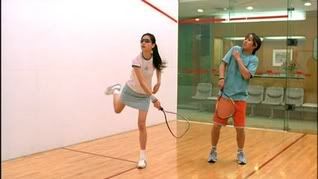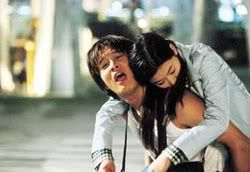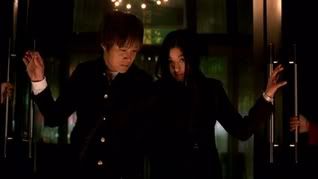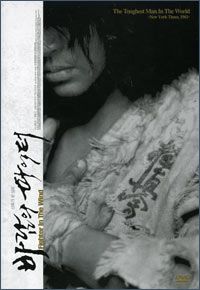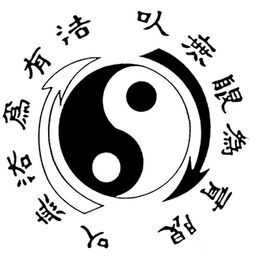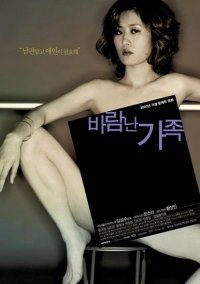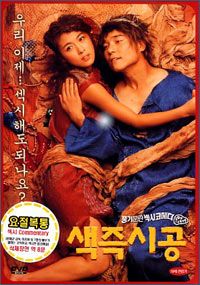My Sassy Girl
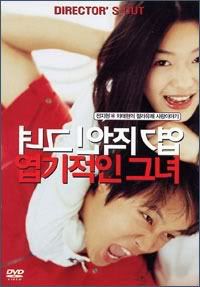
Gyeon-woo is a single Korean college student, still not very sure of what he wants to become in the future. One night, on his way back home, he meets an extremely beautiful girl, but who is also completely drunk. Because the girl talked to Gyeon-woo before falling unconscious, the people surrounding them begin to think that the girl is Gyeon-woo`s girlfriend. Having no other choice than helping the girl, he decides to leave her in a motel, since he doesn't know were she lives. The next morning Gyeon-woo gets a call from this mysterious girl who is very angry about him and wants to know everything that happened the past night. She tells him to meet her right now at the exit of the metro. Gyeon-woo thinking about this, decides to go see the girl. From that night, Gyeon-woo and the girl will become good friends, in a strange sense. As the relation progresses, Gyeon-woo begins to discover how crazy the girls really is, with all her wacky behaviors, angry attitude and always wanting him to please her the way she wants, even if it mean that Gyeon-woo will pass for a complete idiot in public places or gets beaten by the girl. But even if Gyeon-woo suffer, physically and mentally, he really thinks that this beautiful girl will have some sorrow in her and he really wants to help her to get better. But at what price?
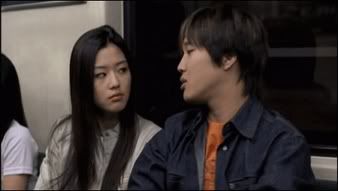
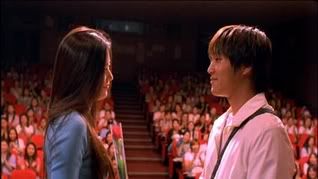
Why do I hate teen movies so much? Because of their uninteresting crappy love story and their unbelievable typical characters (you know that the supposed ugly girl is a perfect super babe when she takes off her glasses). Also because I can't support all the clichés and stereotypes that these kinds of movies like to exploit so much. It's just not funny to me anymore. Of course, because in most cases, cinematography wise, these movies mean absolutely nothing, for me they have almost no artistic values, I just found them a complete waste of time.
But why do I love "My Sassy girl" so much? Because of that unpredictable and enjoyable love story and that the two characters in the movie were awesome and touching, especially that memorable and beautiful Korean girl. Also, that the humor was always right on time, not trying stupid sex jokes or stupid humor, unlike other movie of its genre right now and that visually the movie was surprisingly very well done.
Okay, I know what you are thinking right now, "He said love story, this is a freaking chick flick then!" No not at all…well okay, this movie has a lot of material to please more to a female audience but trust me, just once. I really don't like these kind of movies and drama makes me sleepy, but I was really touched by this sweet romantic story. The story looks simple and yes it is, but there are a lot of things going on during the movie that you will probably miss some of the subtle details the first time you watch it. These details are not essential to the comprehension of the story but it makes a second viewing even more fun. The first part of the story concentrates more on the development of the characters, it really gave us the time to know them and begin to feel attach to the two main characters. Feeling sorry for Gyeon-woo when he gets beaten or humiliated by the girl, but also that a guy can't stay indifferent by that sweet little face that girl can make when she wants to be taken care of. The story is really only about the two main characters and I can't tell you anymore about it because it will spoil the development of their relationship
Here is a romantic comedy for the ages. It's unique in its own way, yet still comfortably familiar as the characters gain our feelings. The unique style of the film cannot be accurately described in words. One must see the expressions on the characters's faces and hear their delivery to truly appreciate it. All one needs to know is that this film has personality, and its brand of comedy and romance will leave a lasting impression.
My Sassy Girl had me laughing and talking to the screen due to its outrageous comedy, it had my epathy for the main characters and their relationship, and it left me with that certain sense of romanticism. It's one of those romances where I come out and for a whole day I am truly a hopeless romantic. Besides the colorful personalities of the leads, the other major aspect of this film that stuck with me was the final message in the film. I refrain to say it here for the chance that it will ruin the ending for those who haven't seen it, but the finale of the film brings everything together and reiterates a certain romantic concept that I think, deep down, we all hope is true.
This film begs no detailed analysis. Truly memorable characters in a unique relationship - that is what this film is about. When you watch it, it will all just come to you - exactly what makes the film what it is. Just sit back and the film will entertain you along the way and finally leave you with lasting memories and feelings that will keep you reflecting on the film for a long time.
